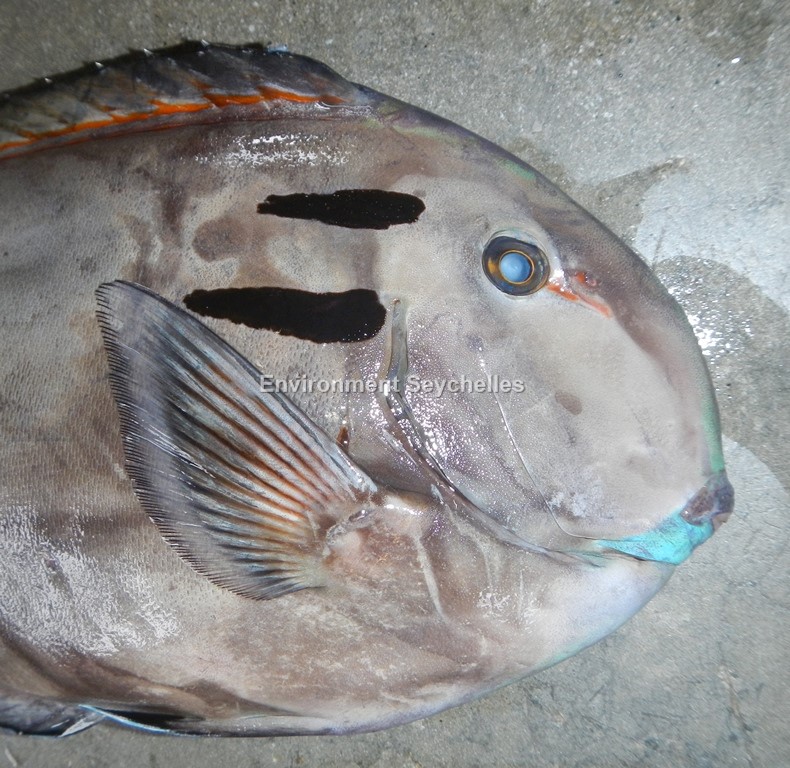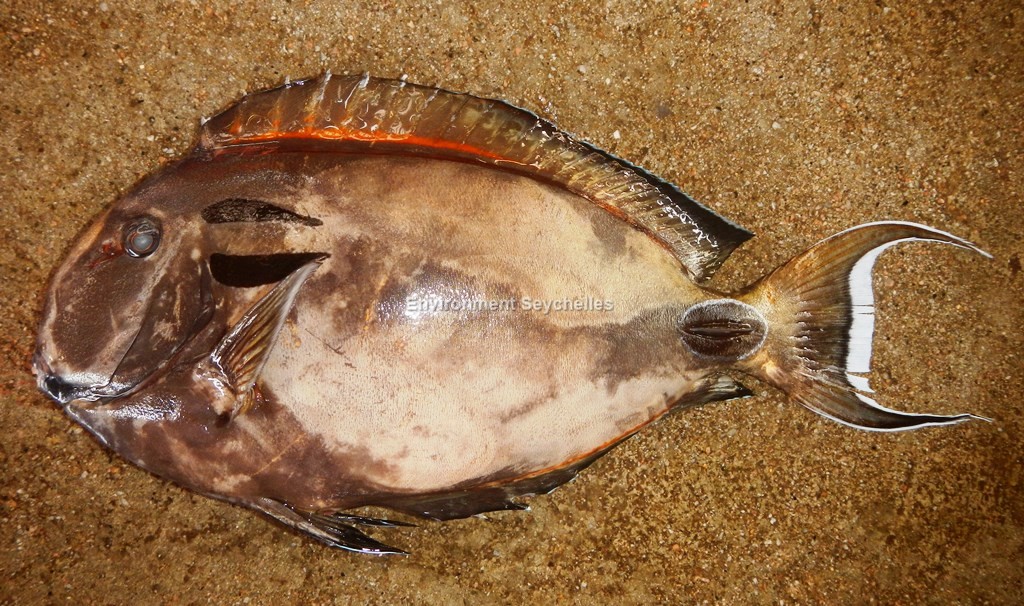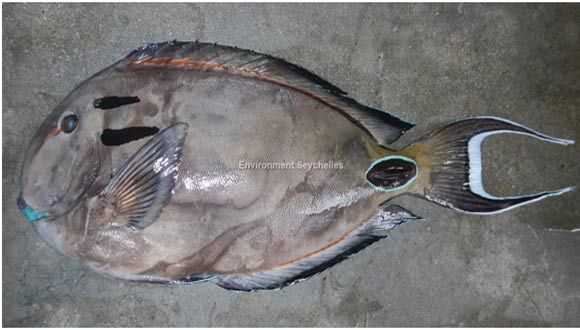Description:
Dorsal spines: 9; Dorsal rays: 23-24; Anal spines: 3; Anal rays: 22-23.
Brown to light tan body with black thick double band (horseshoe mark in smaller specimens) on shoulder behind operculum. A broad black zone on chin which can turn blue in
breeding colours with a blue-green extension above the mouth. Caudal spine surrounded with black oval edged in electric blue/green. Caudal fin with bright white posterior
edge and black submarginal line. Dorsal and anal fins with basal orange band, black submarginal band and electric blue outer edge.
Size:
Maturity: Lm unknown. Range unknown. Max Length: 31cm TL; common length: 25.0 cm TL.
Habitat and Ecology:
Inhabits lagoon and seaward reefs, depth range 1-40 m, usually 3-25m. Solitary or in groups. Sometimes occurs in small shoals. Grazes on benthic algae.
Fishery Status:
This species is not protected or subject to fishery regulations. It is caught in the fish trap fishery.
Notes:
References:
Froese, R. & D. Pauly. Eds. (2018). FishBase. https://www.fishbase.de/summary/Acanthurus-tennentii (14/10/18)
Nevill, J. (2013). A Species Identification Guide for Commonly Caught Fish in the Seychelles Near-Shore Artisanal Fishery. GOS/UNDP/GEF.
Randall, J.E. (2001). Surgeonfishes of Hawaii and the World. ISBN: 1-56647-561-9
Russell, B. et al. (2012). Acanthurus tennentii. The IUCN Red List 2012: e.T177997A1516035. http://dx.doi.org/10.2305/IUCN.UK.2012.RLTS.T177997A1516035.en. (14/10/18).
Citation:
Nevill, J.E.G. & Mason-Parker, C. (2019). Acanthurus tennentii, Doubleband surgeonfish. www.seatizens.sc https://seatizens.sc/species/acanthurus-tennentii-gunther-1861/ (edited 14/06/22).




Very neat post.Thanks Again. Keep writing.